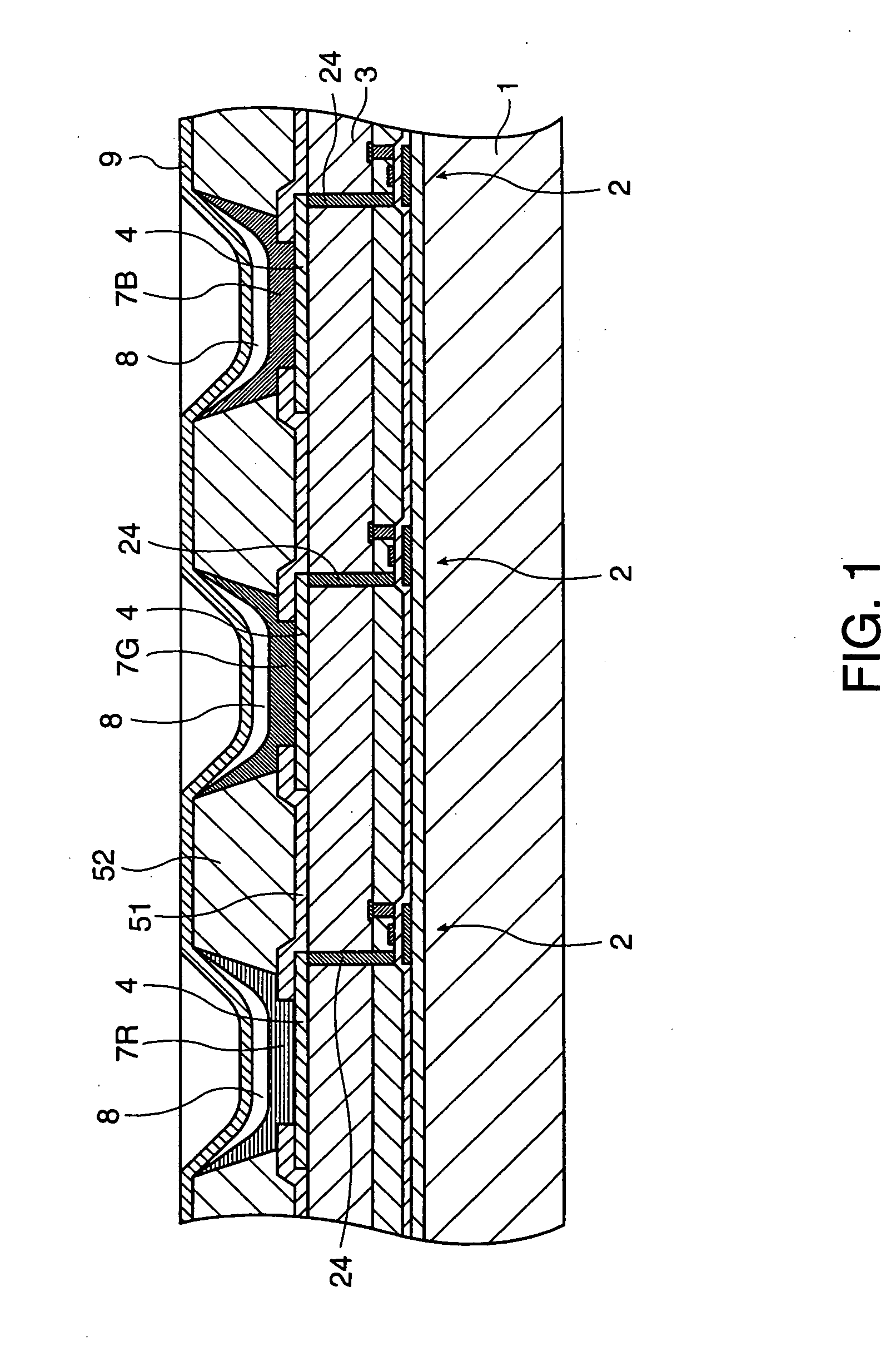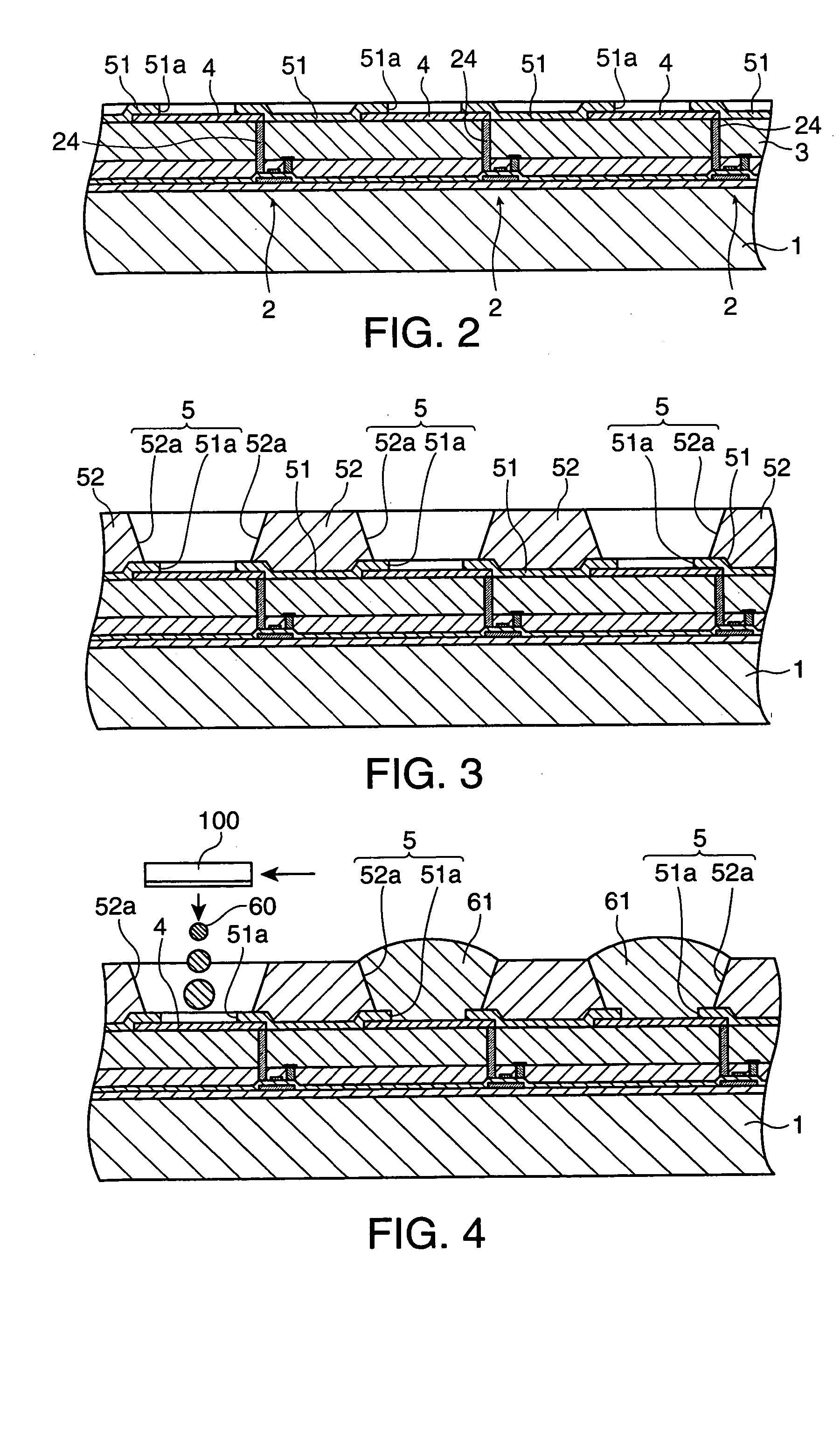Organic light-emitting device, manufacturing method thereof, and electronic apparatus thereof
a light-emitting device and manufacturing method technology, applied in the direction of discharge tube/lamp details, discharge tube luminescnet screens, coatings, etc., can solve the problems of inability to achieve uniform light-emitting positions, the need for perfect multi-layer structures, and the inability to achieve the highest luminous efficiency
- Summary
- Abstract
- Description
- Claims
- Application Information
AI Technical Summary
Benefits of technology
Problems solved by technology
Method used
Image
Examples
Embodiment Construction
[0068] The following sections describe an exemplary embodiment of the present invention.
[0069] A method of manufacturing an OLED, which corresponds to an exemplary embodiment of the present invention, is described by referring to FIG. 1 to FIG. 10. In each drawing, a magnifying scale for each layer and each material component is different part by part to show each layer and each material component in recognizable size on the drawing.
[0070] The OLED to be manufactured here is a color OLED. As shown in FIG. 1; while a first organic EL element being equipped with a red emissive layer 7R, a second organic EL element being equipped with a green emissive layer 7G, and a third organic EL element being equipped with a blue emissive layer 7B; each organic EL element works as a pixel and eventually multiple pixels are placed on a substrate to have each pixel at a required position.
[0071] As shown in FIG. 2; on a glass substrate 1, a thin-film transistor 2 for each pixel is formed at first,...
PUM
| Property | Measurement | Unit |
|---|---|---|
| Percent by mass | aaaaa | aaaaa |
| Solubility (mass) | aaaaa | aaaaa |
| Molecular weight | aaaaa | aaaaa |
Abstract
Description
Claims
Application Information
 Login to View More
Login to View More - R&D
- Intellectual Property
- Life Sciences
- Materials
- Tech Scout
- Unparalleled Data Quality
- Higher Quality Content
- 60% Fewer Hallucinations
Browse by: Latest US Patents, China's latest patents, Technical Efficacy Thesaurus, Application Domain, Technology Topic, Popular Technical Reports.
© 2025 PatSnap. All rights reserved.Legal|Privacy policy|Modern Slavery Act Transparency Statement|Sitemap|About US| Contact US: help@patsnap.com



